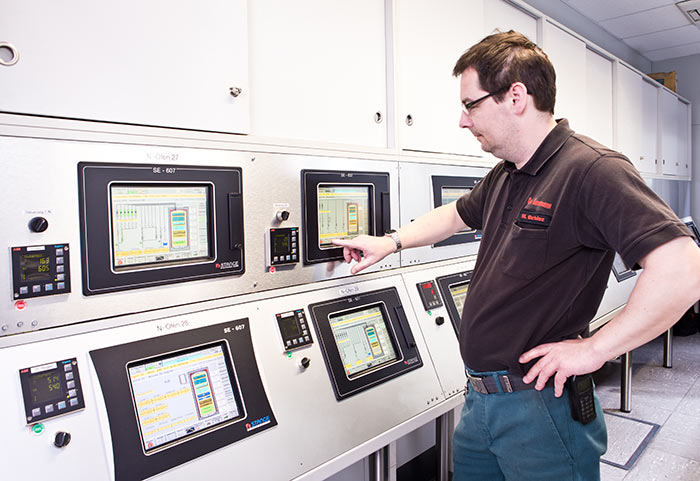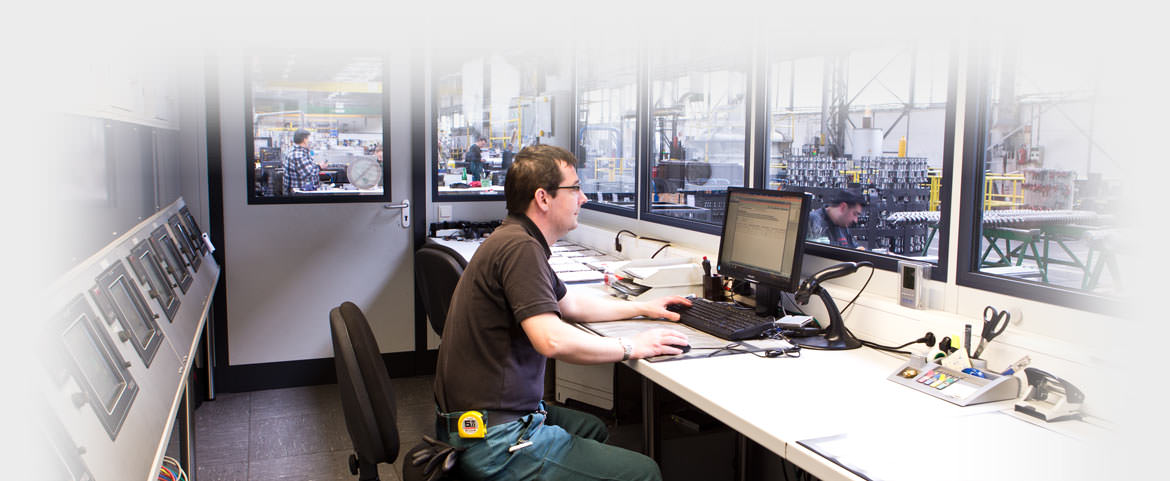NITROCARBURISING IN GAS
Essentially with the nitrocarburizing the same applies as already stated for nitriding. In the foreground of this process however is, the formation of ε-VS (Fe₂₋₃N) with thicknesses of about 10 - 35 microns. Since carbon stabilizes the formation of this layer, it is carried out with carbon containing gases or salts. Originally nitrocarburizing originates from the salt bath technique, although the process is often mistakenly referred to today as salt bath nitriding. Then later on the gas and plasma nitrocarburizing processes were also established. As far as possible a monophasic ε-VS be formed as described. At the same time, during the nitro carburizing there is also produced a precipitation layer. The hardness curves move due to the higher processing temperatures (540- 580 ° C) at a lower level than for a nitriding treatment. It is preferred to nitrocarburize unalloyed steels. When doing so, there is a significant increase in surface hardness, corrosion resistance and resistance to abrasion and adhesion. In particular, the high corrosion resistance is a common reason to use this procedure. Through a subsequent oxidation, the resistance to corrosion, can be further improved.
Also in the nitrocarburizing the above mentioned dependencies apply to material composition, structure and process parameters. The hardness range moves at the level of the nitride layers, and due to the low VS-thicknesses of these layers they are measured in our company with HV1. Since working with high nitrogen potentials Nht should be limited in order to avoid embrittlement of the surface layer.

Since the diffusion rate of nitrogen in non-alloy steels is relatively high and in accordance with DIN 50190 Bl.3, as hardness limit for Nht, the core hardness of the materials plus 50 HV applies. This is the reason why that during the nitrocarburizing the nitriding depths of over 0.5 mm can be achieved, but the hardness curves move at a very low level.
To avoid embrittlement of ferrite in non-alloy steels, they should be used in normal annealing condition or fine- grain building steels should be used. Tempered steels, tool and nitriding steels must be available in tempered form.
The annealing temperatures and the treatment temperature used during nitrocarburizing must be observed during a preceding stress relief. In principle it can be nitrocarburized in gas as well as in plasma. The results are equivalent. Due to the higher cost of nitrocarburizing in plasma usually this is not used. During nitrocarburizing comparatively thin layers are produced. Thus, the tolerable surface pressure of the layers are significantly lower than after a gas nitriding.
Härterei Carl Gommann GmbH
Dreiangelstraße 29
42855 Remscheid
Germany
Tel.: +49 (0) 2191 8865-0
Contact form >>




Heat Treating / Gas Nitriding / Hardness Testing
The largest equipments available:
- Usable diameter 2.850 mm, usable length 5.750 mm
- Usable diameter 4.100 mm, usable length 5.900 mm
For all processes a great number of smaller equipment is available.
